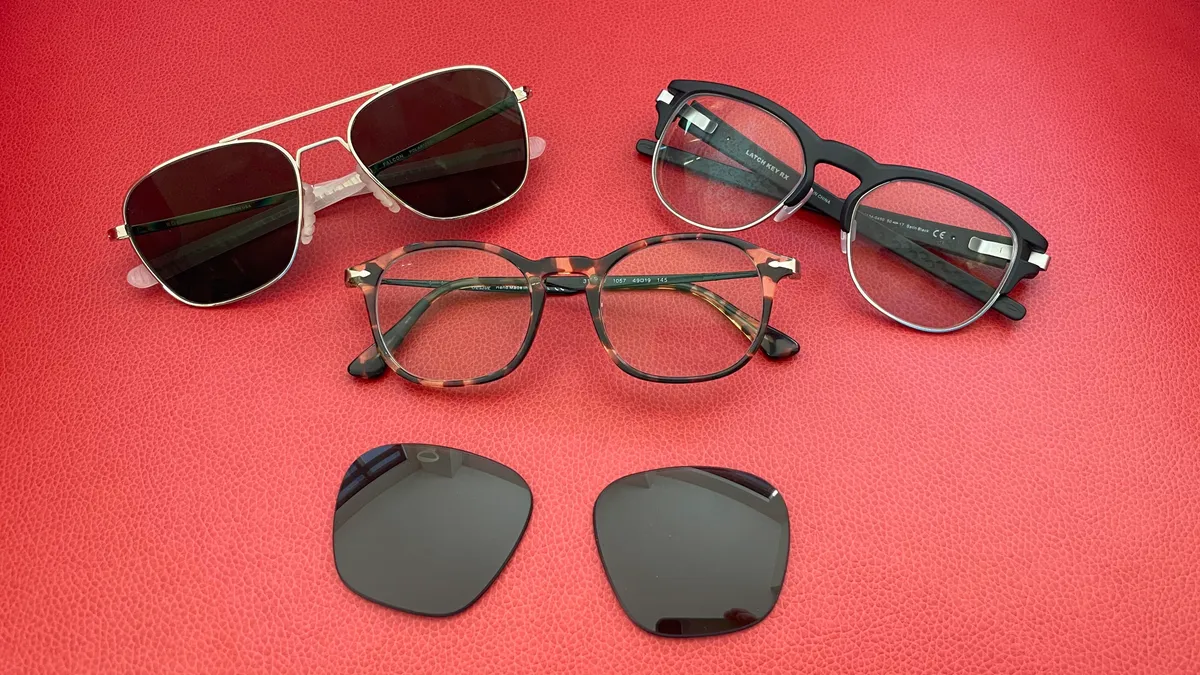When it comes to updating your sunglasses and giving them a fresh lease on life, there’s a simple yet effective solution that often goes overlooked: replacement lenses.
Whether your current lenses are scratched, damaged, or you’re simply looking for a change in style, new lenses can breathe new life into your favorite shades. In this article, we’ll explore the benefits of replacement lenses, the different types available, and how to choose the perfect pair for your sunglasses.
Why Consider Replacement Lenses?
Sunglasses are more than just a fashion accessory; they are essential for protecting your eyes from harmful UV rays and reducing glare. However, over time, even the most high-quality sunglasses can experience wear and tear, diminishing their effectiveness. Here are a few reasons why you should consider replacement lenses:
1. Cost-Effective Solution
Purchasing new sunglasses can be expensive, especially if you’ve invested in a premium brand. Replacement lenses offer a more economical alternative, allowing you to keep your favorite frames while giving them a brand-new look.
2. Environmental Benefits
Sustainability is a growing concern, and disposing of old sunglasses contributes to waste. By replacing your lenses, you can reduce your environmental footprint and extend the life of your shades.
3. Customization
Replacement lenses come in a variety of styles and colors, offering you the opportunity to customize your sunglasses to match your personality and style. Whether you prefer polarized lenses for outdoor activities or mirrored lenses for a trendy look, the options are endless.
4. Durability
New lenses can significantly improve the longevity of your sunglasses. Scratch-resistant coatings and impact-resistant materials can ensure your shades stay in pristine condition, even with daily wear and tear.
Different Types of Replacement Lenses
Before diving into the process of selecting replacement lenses, it’s essential to understand the various types available:
1. Polarized Lenses
Polarized lenses are designed to reduce glare, making them ideal for outdoor activities. Whether you’re driving, fishing, or spending a day at the beach, polarized lenses can enhance your vision by minimizing reflections from surfaces like water, pavement, and snow.
2. Mirrored Lenses
Mirrored lenses have gained popularity for their fashion-forward style and additional glare reduction. These lenses have a reflective coating that not only looks trendy but also provides extra protection from bright sunlight.
3. Photochromic Lenses
Photochromic lenses, often referred to as transition lenses, adapt to different lighting conditions. They darken in bright sunlight and lighten indoors, offering convenience and protection in varying environments.
4. Gradient Lenses
Gradient lenses are characterized by a smooth transition from a darker shade at the top to a lighter one at the bottom. This design is perfect for activities where you need overhead sun protection but still want clear vision below, such as driving.
5. Mirrored Polarized Lenses
These lenses combine the benefits of both polarization and the stylish mirrored coating. They offer top-notch glare reduction and a sleek appearance, making them a popular choice for sports and outdoor enthusiasts.
6. Anti-Reflective Coatings
An anti-reflective (AR) coating can be added to the inner side of your lenses. This coating reduces reflections from the back surface of the lenses, enhancing clarity and reducing eye strain.
How to Choose the Perfect Replacement Lenses
Selecting the right replacement lenses for your sunglasses involves several considerations:
1. Lens Material
Sunglass lenses are typically made from various materials, including glass, polycarbonate, and CR-39 plastic. Each material has its own set of advantages and disadvantages.
Glass lenses offer exceptional clarity but can be heavier. Polycarbonate lenses are lightweight and impact-resistant, making them an excellent choice for active lifestyles. CR-39 plastic lenses are more affordable but may not be as durable.
2. Lens Tint
The color of your replacement lenses can affect both your style and vision. Dark tints like gray and brown are popular for reducing brightness and glare, while green and copper tints enhance contrast. The choice of tint largely depends on your preferences and the activities you’ll be using your sunglasses for.
3. Coatings
Consider any additional coatings you might want on your lenses. Anti-scratch coatings can extend the life of your sunglasses, while anti-reflective coatings reduce internal reflections for clearer vision. Mirror coatings, as mentioned earlier, are trendy and offer extra glare protection.
4. Compatibility
Ensure that the replacement lenses you choose are compatible with your existing frames. Some sunglasses have specific lens shapes and sizes, so it’s important to select lenses that fit securely without compromising the aesthetics or functionality of your shades.
5. UV Protection
Protection from harmful UV rays is the primary purpose of sunglasses. Make sure your replacement lenses offer 100% UV protection. This information should be readily available from the manufacturer or retailer.
DIY vs. Professional Replacement
Once you’ve decided on the type of replacement lenses you want, you’ll need to choose between a do-it-yourself (DIY) replacement or seeking professional help. Here’s a quick comparison:
DIY Replacement
DIY replacement is a cost-effective option if you’re comfortable working with small tools. Many retailers offer replacement lens kits that include the necessary tools and instructions. However, this method requires careful attention to detail and a steady hand.
Final Thoughts
Updating your sunglasses with replacement lenses is a practical and eco-friendly way to enhance your eyewear while protecting your eyes from the sun’s harmful rays. With various lens types, tints, and coatings available, you can tailor your sunglasses to meet your specific needs and style preferences.
Whether you opt for a DIY replacement or seek professional assistance, your rejuvenated shades will have you looking and seeing your best in no time. So, don’t retire your old sunglasses just yet; consider new lenses and enjoy the benefits of improved style, durability, and UV protection.

